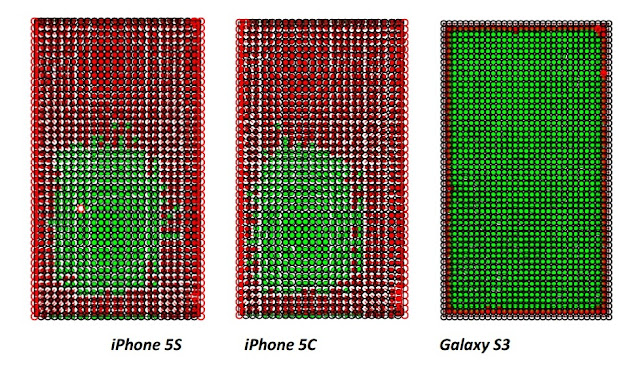In another recent tear-down, where display's touch accuracy was being tested, Samsung's 2012 outdated flagship, the Galaxy S III beats the new Apple manufactured iPhone 5S's and 5C's touch panel. This robotic test was conducted by OptoFidelity's Touch Panel Performance Tester (TPPT) department, where the new releases from the Americans failed to the South Koreans.
As the sources claims, when the results were out, it was hard to believe, as seen clearly, the Samsung made Galaxy S III's touch response to the robots were comparatively high in all areas when compared to the iPhone's. The green area is reportedly the measurement within in one millimeter of accuracy, while red marked area indicates the measurement of inaccuracy, which is basically more than one millimeter and the black circles showing the points where the test robot has touched a sensor.
To be more clear, the red circles pictured above is the result where the device has not reacted to the robotic fingers touch at all, and it is proven that, other than the keyboard area, the new iPhone's seems to be lacking the response that showed up in the Samsung's Galaxy S III.
Source: OptoFidelity 1, 2, TechnoBuffalo


